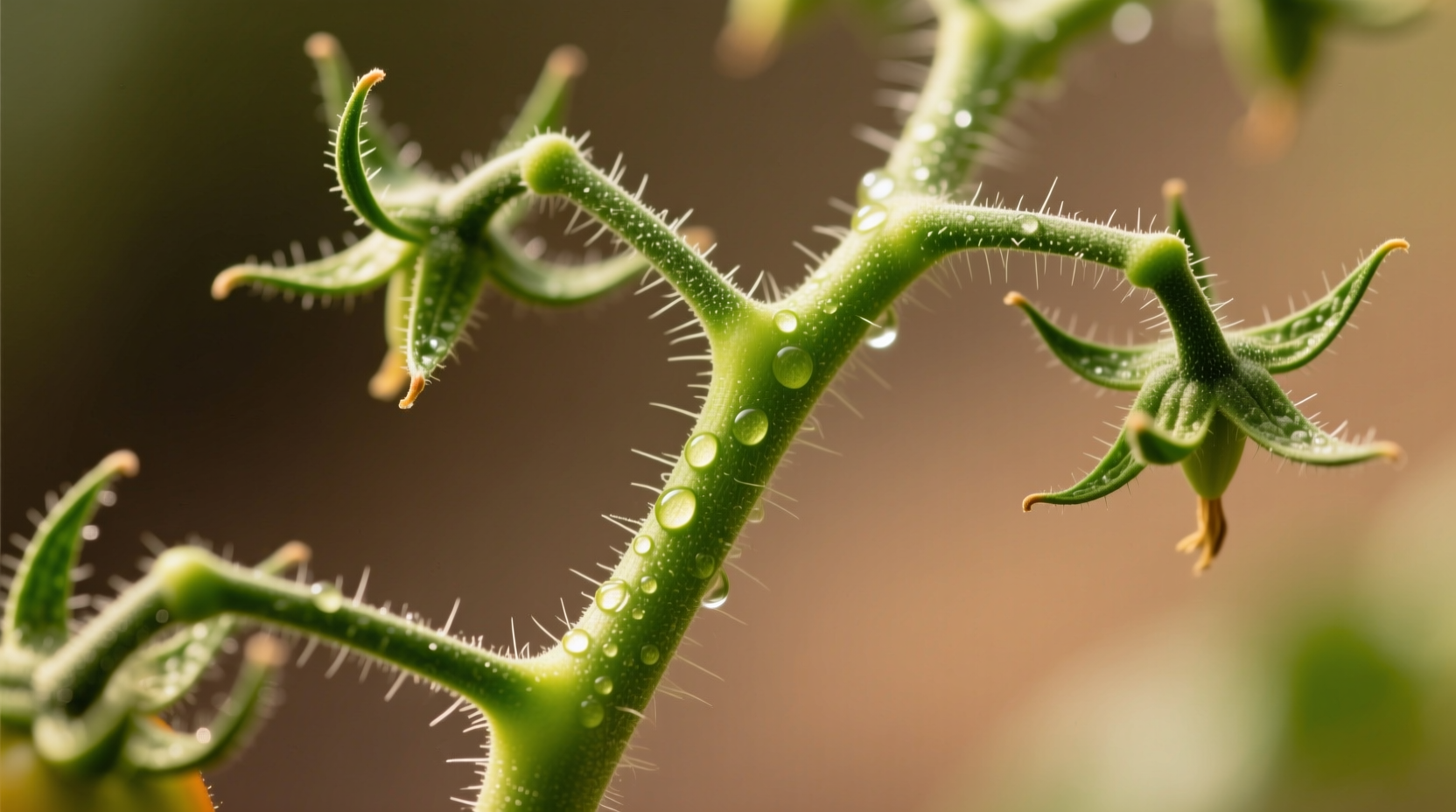Understanding tomato stem biology transforms your gardening results. Whether you're growing cherry tomatoes in containers or cultivating heirloom varieties in raised beds, mastering stem care delivers healthier plants and more abundant harvests. This guide reveals science-backed techniques that professional growers use to optimize tomato plant structure and productivity.
The Essential Role of Tomato Stems in Plant Health
Tomato stems function as the plant's circulatory system, moving water from roots to leaves and transporting sugars produced during photosynthesis to developing fruits. Unlike many plants, tomatoes can develop roots along their stems—a characteristic called adventitious rooting—which explains why deep planting promotes stronger root systems. The vascular bundles within the stem contain xylem (moving water upward) and phloem (distributing nutrients), making stem integrity crucial for overall plant vitality.

Determinate vs. Indeterminate: Understanding Stem Growth Patterns
Recognizing your tomato variety's growth habit determines your pruning approach. This fundamental distinction affects everything from support systems to harvest timing:
| Characteristic | Determinate Tomatoes | Indeterminate Tomatoes |
|---|---|---|
| Growth Pattern | Bush-type, stops growing at 3-4 feet | Vining, continues growing until frost |
| Flowering | Flowers form at terminal ends | Flowers form along side shoots |
| Harvest Period | Concentrated 2-3 week window | Continuous throughout season |
| Pruning Needs | Minimal pruning required | Regular sucker removal essential |
| Support System | Cages sufficient | Stakes or trellises necessary |
This biological distinction explains why pruning techniques differ significantly between varieties. As noted by the University of Minnesota Extension, "Determinate varieties set fruit in concentrated periods and stop growing when fruit sets on the terminal or top bud, while indeterminate varieties develop as a vine and continue growing and setting fruit until killed by frost."
Pruning Protocol: When and How to Manage Tomato Stems
Effective stem management follows a clear seasonal progression that aligns with the plant's natural development cycle:
- Transplanting Stage (Weeks 1-2): Remove lower leaves that would touch soil to prevent disease transmission. Bury the stem up to the first set of healthy leaves to encourage additional root development.
- Early Growth (Weeks 3-5): For indeterminate varieties, begin removing suckers (the shoots that form in leaf axils) when they're 2-4 inches long. Focus on maintaining 1-3 main stems depending on your support system.
- Flowering Stage (Weeks 6-8): Continue sucker removal while monitoring for blossom end rot indicators. Remove any stems growing inward toward the plant center to improve air circulation.
- Fruit Development (Weeks 9-12): Practice strategic leaf pruning around developing fruit clusters to increase sunlight exposure while maintaining sufficient foliage for photosynthesis.
- Late Season (Weeks 13+): Top plants 3-4 weeks before first expected frost to direct energy toward ripening existing fruit rather than new growth.
The Oregon State University Extension confirms that "removing suckers on indeterminate tomatoes improves air circulation, reduces disease incidence, and directs the plant's energy toward fruit production rather than excessive vegetative growth." However, they caution against over-pruning, which can lead to sunscald and reduced yields.
Common Tomato Stem Problems and Solutions
Recognizing stem issues early prevents catastrophic plant loss. These three problems require immediate attention:
Cracking or Splitting Stems
Often caused by rapid growth following heavy watering or rain. Maintain consistent soil moisture using mulch and drip irrigation. For minor cracks, secure with grafting tape; severely damaged stems may require removal.
Purple or Reddish Stems
Indicates phosphorus deficiency or cold stress. Test soil pH (tomatoes prefer 6.2-6.8) and apply phosphorus-rich fertilizer. In cool climates, use black plastic mulch to warm soil.
Wilting Despite Moist Soil
Suggests vascular wilt diseases like fusarium or verticillium. Remove affected plants immediately and rotate crops. The USDA Agricultural Research Service recommends planting resistant varieties (marked with V, F, N on seed packets) as the most effective prevention.
Advanced Stem Management Techniques
Professional growers employ these specialized methods to maximize production:
Stem Layering for Additional Rooting
Bend a healthy side stem to the ground, cover 6-8 inches with soil while leaving the growing tip exposed. This creates additional root zones that support larger fruit production. After 2-3 weeks, sever the connection to the main plant.
Double-Stem Training System
For indeterminate varieties, allow two main stems to develop instead of one. Position them in opposite directions on a trellis system. This increases yield by 25-30% while maintaining manageable plant size. Research from University of Florida IFAS shows this method optimizes light interception and fruit quality.
Season-Ending Stem Management
Three weeks before first frost, remove all new flower clusters and pinch terminal growth points. This redirects the plant's energy toward ripening existing fruit. Simultaneously, remove leaves shading ripening tomatoes to accelerate color development.
When Not to Prune: Contextual Boundaries for Stem Management
Certain conditions require modified approaches to tomato stem care:
- Container Gardening: Limit pruning to essential sucker removal; container plants have restricted root systems that require more foliage for energy production
- Hot Climate Growing: Maintain additional foliage to shade fruit and prevent sunscald; reduce pruning by 30-40% in regions with intense afternoon sun
- Disease Outbreaks: During fungal epidemics, increase leaf removal around fruit clusters but avoid major structural pruning that stresses plants
- Heirloom Varieties: Many heritage tomatoes naturally produce more suckers; allow additional stems to develop as they often yield more flavorful fruit
As the University of Wisconsin Extension advises, "Pruning requirements vary significantly based on environmental conditions. Gardeners in humid regions should prioritize air circulation through pruning, while those in arid climates should focus on maintaining sufficient foliage for sun protection."











 浙公网安备
33010002000092号
浙公网安备
33010002000092号 浙B2-20120091-4
浙B2-20120091-4